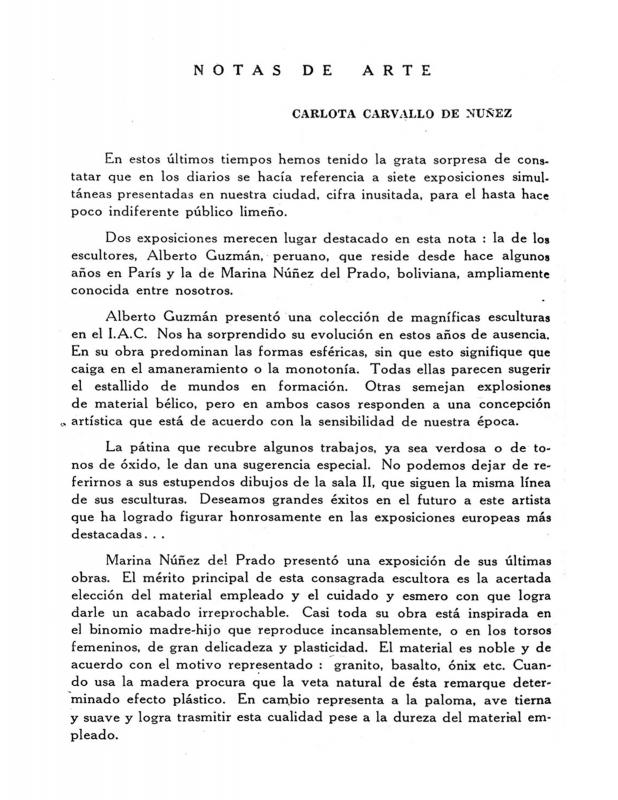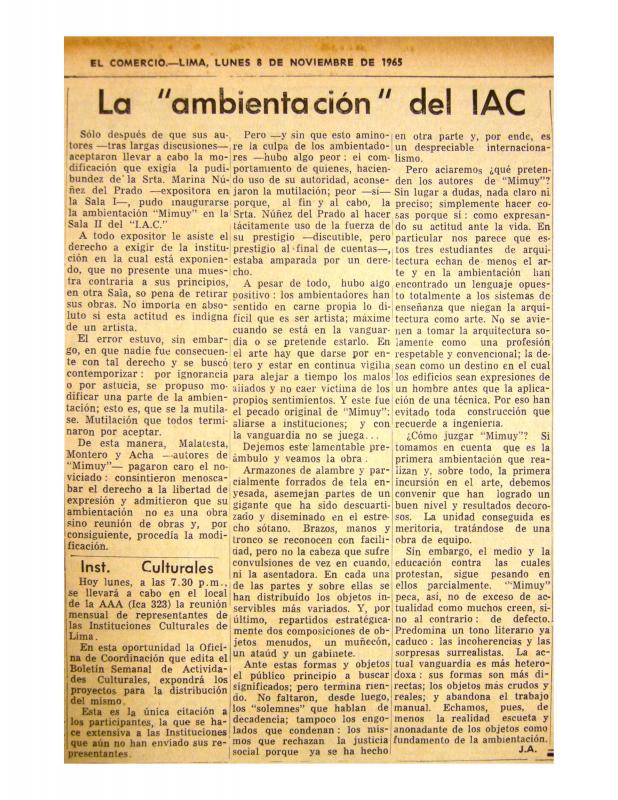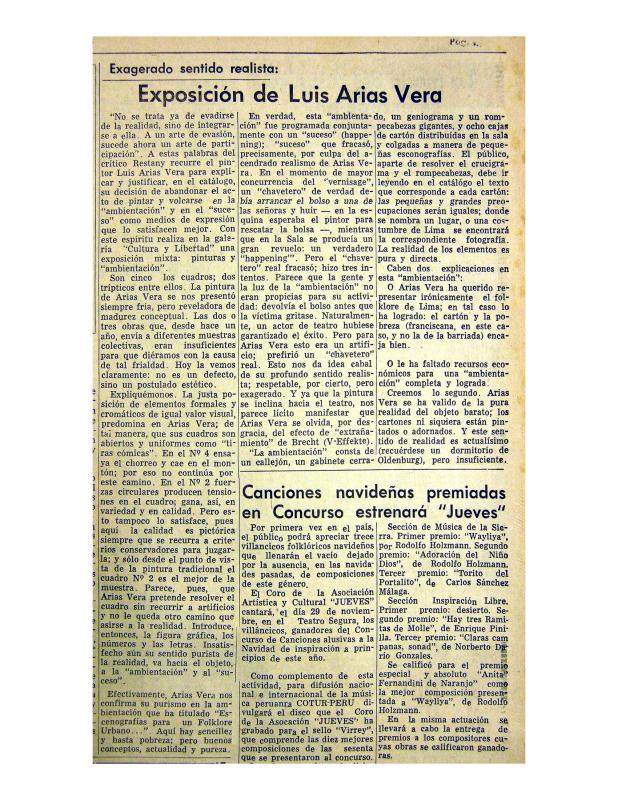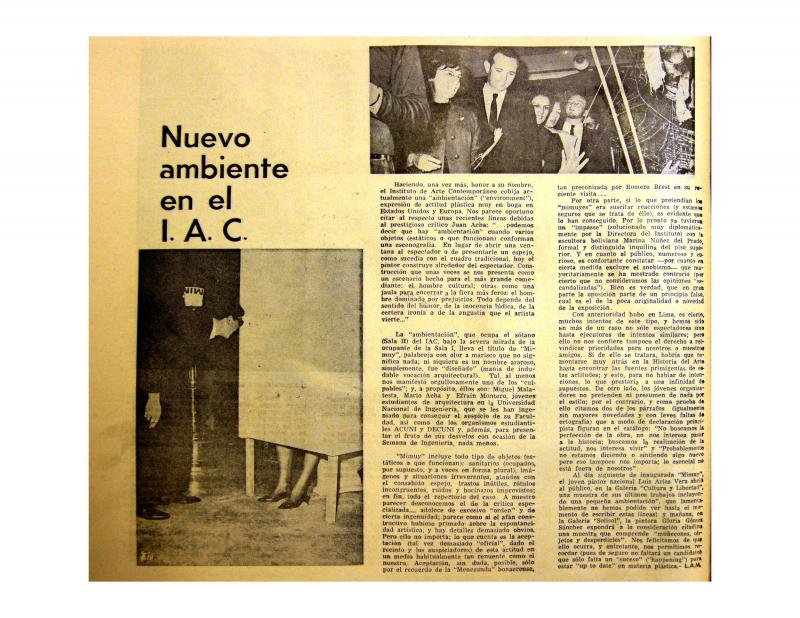In late 1965 in Lima three exhibitions opened that are now considered to be the earliest harbingers of installations and happenings in Peru. They were Mimuy, an installation by Mario Acha (the son of the critic Juan Acha), Efraín Montero, and Miguel Malatesta; Yllomomo by Gloria Gómez Sánchez; and Escenografía para un folklore urbano by Luis Arias Vera. Juan Acha promoted these experimental projects in his column in El Comercio, the influential Lima newspaper. The writer Francisco Bendezú, who was not in favor of these new trends in art, argued with the critic, pointing out the cultural differences between Peru and the cosmopolitan cities where these art languages were being developed.
The Peruvian critic Juan Acha (1916–95), who lived in Mexico, was one of the main promoters of the Peruvian artistic avant-garde in the mid-1960s. In his articles, essays, and newspaper reviews he was both a theoretical champion for Pop and Op-Art and a supporter for the young artists in those movements that represented the developmental ideology of the period.
Juan Acha was a key figure in the conversation about art in Peru and the rest of Latin America in the second half of the twentieth century. Acha originally trained as a chemical engineer in Munich, Germany and worked in that field when he returned to Lima in 1942. Sixteen years later, in 1958, he published his first articles about art in El Comercio, the influential Lima newspaper, thus launching a long-term critical and theoretical career. In his articles and essay he provided a detailed assessment of the local art scene, identifying the various nationalist trends in the Peruvian visual arts. It had been just a few years since the intense debate about abstraction, in which one of the knottiest problems involved the relationship between art and national identity. In the late 1950s, however, pre-Columbian art began to emerge as a possible solution to the conflict between the option of a Peruvian style of art and the cosmopolitanism of abstraction; Acha actually researched the latter in a number of his essays. Though Acha’s position evolved significantly over the course of his career, he never wavered in his commitment to “artistic avant-garde” movements and his research into the role of “identity in art,” whether Peruvian or Latin American.
[For additional information, see the following articles in the ICAA digital archive: by Carlota Carvallo de Núñez “Notas de arte” (doc. no. 1142429); by Juan Acha “La “ambientación’ del I.A.C.” (doc. no. 1142493), and “Exagerado sentido realista: Exposición de Luis Arias Vera” (doc. no. 1142510); by Carlos Rodríguez S. “Mimuy” (doc. no. 1142462); and by Luis Antonio Meza “Nuevo ambiente en el I.A.C.” (doc. no. 1142478)].





